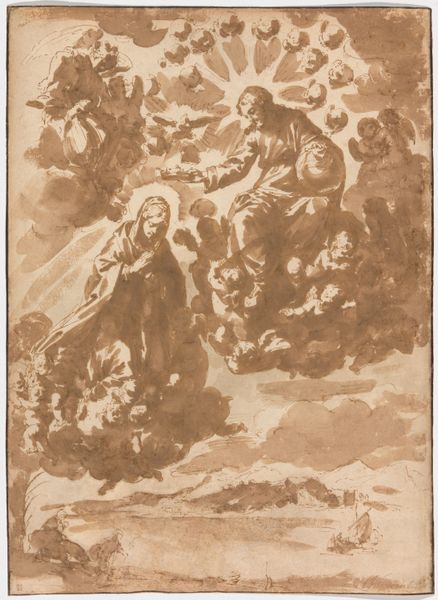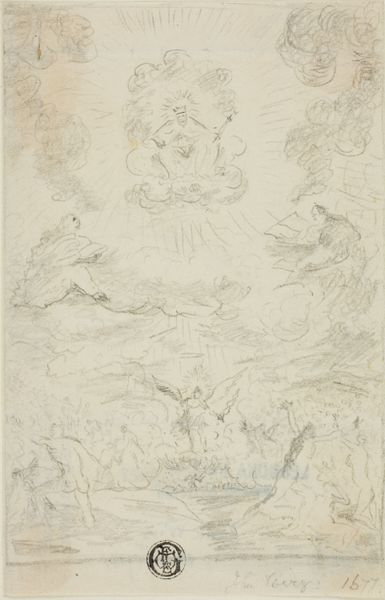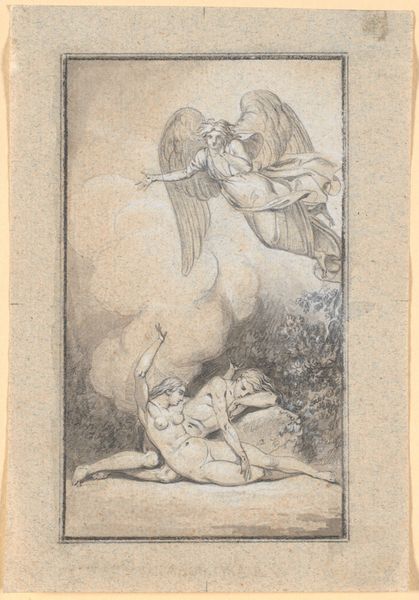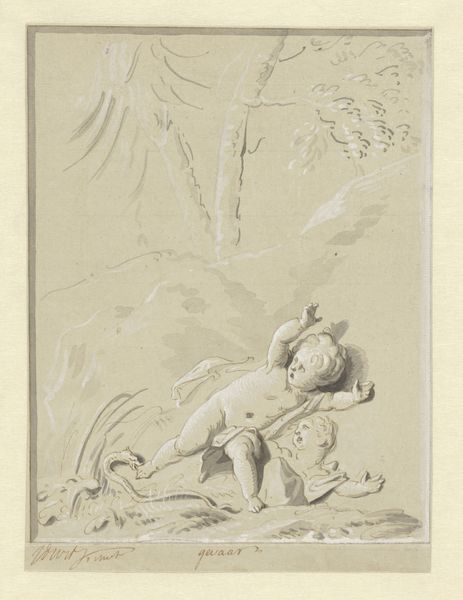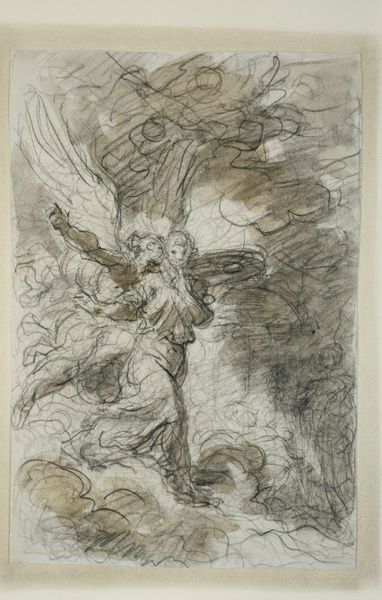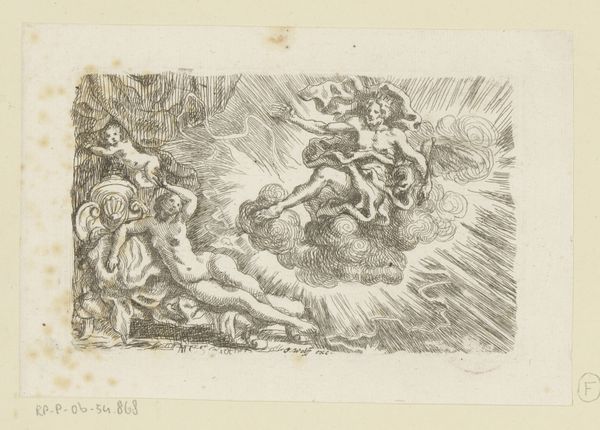
#
pencil drawn
#
toned paper
#
light pencil work
# print
#
pencil sketch
#
old engraving style
#
etching
#
pencil drawing
#
pen-ink sketch
#
pencil work
#
watercolour illustration
Dimensions: image: 26 × 18 cm (10 1/4 × 7 1/16 in.) sheet: 29.3 × 21.4 cm (11 9/16 × 8 7/16 in.)
Copyright: National Gallery of Art: CC0 1.0
Editor: This is Jean-Charles François's "God the Father Creating the Heavens," made around 1760. It looks like a print, perhaps an etching or engraving, in a sepia tone. It’s quite striking—it reminds me of old biblical illustrations, with all the drama and grandeur you’d expect. What do you see in this piece? Curator: This piece demands that we look at the ways in which patriarchal narratives are visually constructed and reinforced. Notice how God the Father is positioned—dominant, central, literally creating the universe around him. The swirling chaos subdued by his very male, very white, gaze. How does this visual language, rooted in theological justification, contribute to power structures still prevalent today? Editor: So you’re saying the artistic choices, like the figure’s prominence and expression, aren't just aesthetic, but carry social and political weight? Curator: Precisely! Think about the implications of depicting creation as an act of singular, masculine authority. What voices are silenced, what perspectives erased, by this narrative? Even the medium—printmaking—suggests dissemination, the widespread circulation of this specific ideology. Editor: It's like the artwork naturalizes a certain hierarchy... Curator: Absolutely. And it’s our responsibility to critically examine these visual representations, to deconstruct the historical baggage they carry. Consider, also, how images like these have been used to justify inequalities and oppression. How can we engage with art history in a way that challenges, rather than reinforces, these power dynamics? Editor: I see. Looking at it this way, it's less about appreciating the technique and more about understanding what the image is actually doing. Curator: Exactly. It is less about aesthetic appreciation and more about acknowledging art as an active agent in shaping our understanding of the world, and hopefully changing it for the better. Editor: Thanks, I’ll definitely consider the socio-political factors inherent within visual communication going forward.
Comments
No comments
Be the first to comment and join the conversation on the ultimate creative platform.

